
BY DR. RAVINDER PALL SAINI,
INDIAN FOREST SERVICE ( RETIRED)
, MEMBER, BOARD OF ADMINISTRATION,
FOREST RESEARCH UNIVERSITY,
DEHRADUN.
DEHRADUN, 2 FEBRUARY 2024:
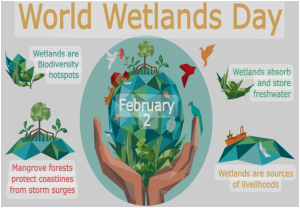
World Wetlands Day is observed internationally every year on 2nd February to develop consciousness about the emphatic necessity to conserve wetlands, highlight their importance in the ecosystem and the vital role they play in mitigation of adverse effects of climate globally.
World Wetlands Day is commemorated every year on 2nd February. This day marks the date of the adoption of the Convention on Wetlands on 2nd February 1971, in the Iranian city of Ramsar on the shores of the Caspian Sea. Since 1997, the Ramsar Secretariat has provided outreach materials to help raise public awareness about the significance and value of wetlands.
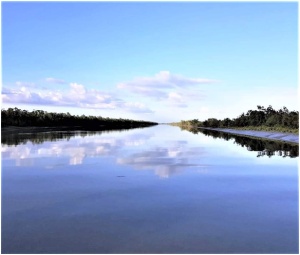
“Wetlands and Human Wellbeing” is the theme for World Wetlands Day 2024. This year’s campaign spotlights how interconnected wetlands and human life are — with people drawing sustenance, inspiration and resilience from these productive ecosystems.
Virtually 90% of the world’s wetlands have been damaged since the 1700s, and we are losing wetlands three times faster than forests. Yet, wetlands are crucially important ecosystems that immensely contribute to biodiversity, climate mitigation and adaptation, freshwater availability, world economies, and more. Therefore it is imperative that we all raise national and global awareness about wetlands in order to turn around their rapid loss and promote actions to conserve and restore their magnificence.
World Wetlands Day is the ideal time to enhance people’s awareness of these vitally crucial ecosystems for sustainability of our overall ecology.
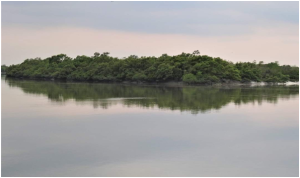
What are wetlands?
A wetland is a distinctive ecosystem that is inundated by water, either permanently or seasonally, where oxygen-free processes prevail. The primary factor that characterizes wetlands from other landforms or water bodies is the distinctive vegetation of aquatic plants, adapted to the unique hydric soil. Wetlands play several functions, including water purification, water storage, processing of carbon and other nutrients, stabilization of shorelines, and support of plants and animals.
As per the definition of the United States Environmental Protection Agency (EPA), wetlands are areas where “water covers the soil, or is present either at or near the surface of the soil all year or for varying periods of time during the year, including during the growing season”.
According to the Ramsar Convention, wetlands comprises both natural and man-made sites including lakes, swamps, marshes, mangroves, salt pans, tidal flats, and reservoirs.
Sundarbans Wetland designated as India’s 27th Ramsar site on 30th January 2019. Sundarbans has the distinction of being the largest contiguous mangrove forest in the world.
The world’s largest protected wetland is the Llanos de Moxos in Bolivia. It is greater than 17 million acres (roughly the size of North Dakota) and borders Peru, Brazil, and Bolivia. Like other wetlands, Llanos de Moxos is extremely bio-diverse; housing 60 amphibians, 100 reptiles, 565 birds, 625 fish, and more than 1,000 plant species. Other large wetlands situated in the world include The West Siberian Lowland, Amazon River Basin, and Hudson Bay Lowland.
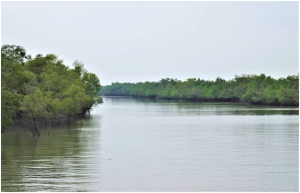
The Pantanal is the largest wetland covering an area between 54,000 and 75,000 square miles. It extends across Paraguay, Brazil, and Bolivia receiving runoff from the surrounding highlands; eventually discharging into the Paraguay River.
Wetlands occur naturally on every continent:
The main wetland types are swamp, marsh, bog, and fen; sub-types include mangrove forest, carr, pocosin, floodplains, mire, vernal pool, sink, and many others. Many peatlands are wetlands. The water in wetlands is either freshwater, brackish, or saltwater.
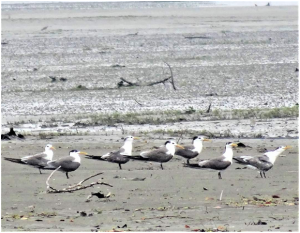
The largest wetlands include the Amazon River basin, the West Siberian Plain, the Pantanal in South America, and the Sundarbans in the Ganges-Brahmaputra delta.
Importance of wetlands:
Wetlands play a significant part in maintaining a wide range of biodiversity and preserving many natural cycles. It plays an important role in water purification and flood control, provides a habitat for the different plant as well as animal species, and maintains local livelihoods.
1.Wetlands are mostly covered by water:
As the name suggests, most of the wetlands are covered by water ranging from fresh, salty, or somewhere in between. For a place to be considered as a wetland, it must be soaked or filled with water for a good duration of the year.
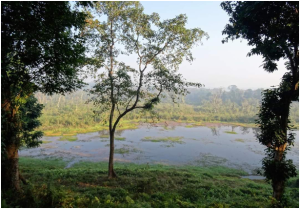
-
Biological Diversity of Wetlands is Highest:
Wetlands are one of the most diverse biomes in the world. This diversity is mostly because the biomes are humid and moist throughout the year; providing a perfect place for many species to live. They are a suitable feeding ground and habitat for countless species. The decomposition of organic material provides nutrition for all inhabitants thus maintaining a healthy food-chain and food web within the ecosystem.
-
Wetlands act as Survival Ground for Birds:
About 150 different species of birds involving the geese, kingfishers, ducks, ibises, and sandpipers depend on these wetlands for their survival. For example, up to 80% of all the birds breeding in America require wetlands. Birds may perpetually adopt wetlands as their primary habitat and may migrate from one habitat to another.
4.Wetlands act as Natural Water filters:
Wetlands can act as natural filters that purify water. They are also regarded as the kidneys of the earth’s ecosystem. During rainfall, Wetlands can absorb fertilizers in runoff from agricultural land; thereby preventing eutrophication and halting the development of dead zones in water bodies.
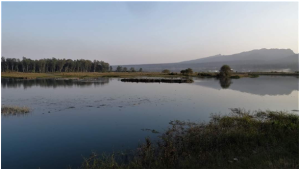
The municipalities can use it to their advantage for waste-water treatment. They are already being used by many due to their low cost, convenience, and effectiveness. Municipalities are converting pre-existing wetlands for their waste-water treatment plants to purify wastewater. Wetlands can remove more than 60% of metals found in water and convert the dissolved nitrogen into nitrogen gas. They do this mainly through percolation of the soil and the uptake of the substance by plants found in these wetlands.
-
Approximately, 20,000 species depend on wetlands for survival:
The wetlands consist of the most diverse ecosystem on the planet. This means that a lot of species depends on the presence of wetlands for their survival. They accommodate about 20,000 animal and plant species.
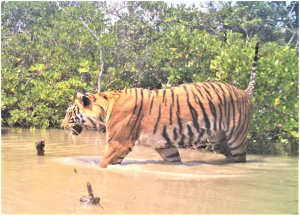
6.Wetlands Store of 1/3 of the World’s Carbon:
The carbon-capturing ability of wetlands is amazing, given the fact that they cover a very small portion of the earth. Wetlands can store up to 50 times more carbon than rainforests, which means only with covering 3% of the planet they can store one-third of the world’s total carbon.
-
Wetlands Prevent Floods – and Natural Disasters:
Wetlands can collect and store water, this is essential as it prevents flooding. They act like a sponge, soaking and storing all the excessive water nearby thus reducing the risk of flooding. EPA states that 1.5 million gallons of floodwater can be stored in just an acre of wetland. This allows rivers to stay at normal water levels and reduces the risk of any potential natural disasters from occurring in future, such as typhoons or hurricanes.
8.Reverses Climate Change:
Climate change is a major issue faced by the planet and its effects are becoming more and more visible in the form of natural disasters. Wetlands have a great capacity for storing carbon. This keeps greenhouse gases at bay, reducing the greenhouse effect and thus, fights climate change. This impact of wetlands on climate change has increased its value among countries and further efforts are being carried out for preservation of wetlands.
-
Wetlands occur where Water meets Land:
It is a proven fact that wetlands are found where water meets lands, and they serve as a link between the land and water.
-
The Ramsar Convention which protects wetlands was started in 1971:
Ramsar convention is an international treaty for the protection of wetlands which was established more than 40 years ago in 1971. Today, because of it, more than 2,000 wetlands have been given the status of ‘Wetlands of International Importance’.
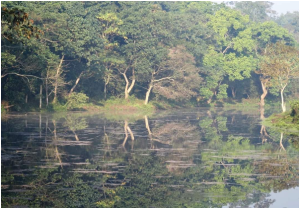
Types of wetlands:
Coastal wetlands: mangroves, estuaries, saltwater marshes, lagoons etc.
Inland wetlands: marshes, fens, lakes, swamps, rivers, floodplains, and ponds.
Human-made wetlands: Fishponds, saltpans, and rice paddies.
What is the importance of wetlands in India?
Wetlands not only support high intensities of biodiversity, but also offer a wide range of essential resources and ecological functions such as food, water, fibre, groundwater recharge, water purification, flood moderation, storm protection, erosion control, carbon storage and climate control.
Wetlands are under constant threats!
Although wetlands are a valuable ecosystem, providing benefits to every living creature on the planet. Like other biomes, wetlands are also facing threats of extinction. These threats include a wide range of pollution activities, climate change, agriculture, and the development of dams.

Advertisement:













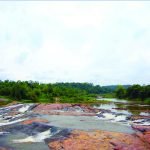





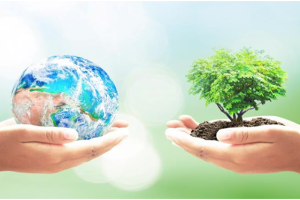
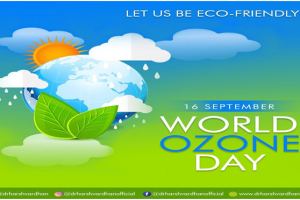








Add Comment